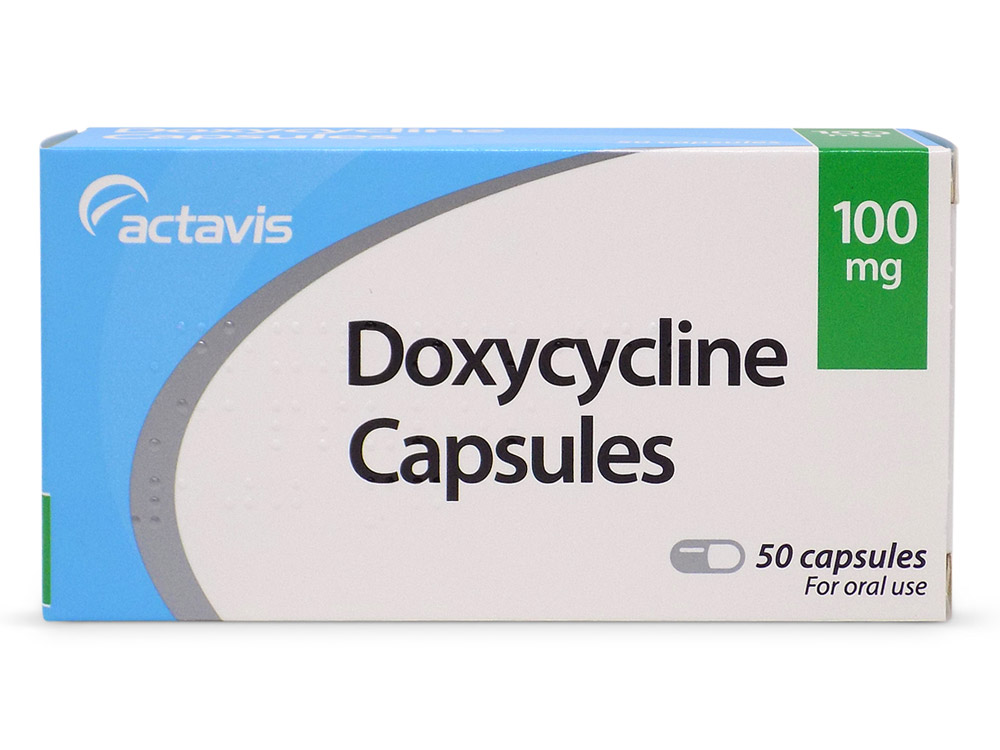Buy Doxycycline

Doxycycline
Are you looking for an effective treatment for bacterial infections? Doxycycline is a widely prescribed antibiotic that is known for its effectiveness in treating a variety of infections, from acne to sexually transmitted diseases. If you’re in need of Doxycycline, but don’t want to pay exorbitant prices at your local pharmacy, there are affordable options available online.
When it comes to buying Doxycycline online, it’s crucial to find a reputable source that offers genuine medication. With so many online pharmacies to choose from, it can be overwhelming to discern which ones are reliable. That’s why we’re here to help you navigate the options and find a trustworthy online supplier.
At our recommended online pharmacy, you can buy Doxycycline at affordable prices without compromising on quality. We work with licensed suppliers who adhere to strict quality control measures, ensuring that you receive genuine medication that is both safe and effective. Additionally, our online ordering process is simple and secure, making it convenient for you to purchase Doxycycline from the comfort of your own home.
Don’t let high prices at your local pharmacy deter you from getting the treatment you need. With our affordable Doxycycline options, you can take control of your health without breaking the bank. Browse our selection of Doxycycline products today and find the right option for you.
Understanding Doxycycline
Doxycycline is a widely used antibiotic that belongs to the tetracycline family. It is commonly prescribed to treat various bacterial infections, including respiratory tract infections, sexually transmitted infections, acne, and other inflammatory skin conditions. Doxycycline works by inhibiting the growth of bacteria, preventing them from reproducing and spreading.
This medication is available in different forms, including tablets, capsules, and oral suspension. It is usually taken orally, with or without food, as directed by a healthcare professional. The dosage and duration of treatment will depend on the specific infection being treated and the individual’s medical condition.
Doxycycline is generally well-tolerated, but like any medication, it can cause side effects. Common side effects may include nausea, vomiting, diarrhea, and stomach upset. It is important to complete the full course of treatment as prescribed, even if symptoms improve, to ensure the infection is completely eradicated.
Before taking doxycycline, it is essential to inform your healthcare provider about any allergies, medical conditions, and medications you are currently taking. Certain medications, such as antacids, iron supplements, and dairy products, can interfere with the absorption of doxycycline, so it is important to follow the instructions provided by your healthcare provider.
In conclusion, doxycycline is an effective antibiotic that is commonly used to treat bacterial infections. It is important to understand how to take the medication correctly and be aware of potential side effects. Always consult with a healthcare professional before starting any new medication.
Benefits of Doxycycline
Doxycycline is an antibiotic medication that offers several benefits for the treatment of various bacterial infections. This medication belongs to the tetracycline antibiotic class and works by interfering with the production of proteins that bacteria need to grow and multiply.
One of the main benefits of doxycycline is its broad-spectrum activity, meaning it can effectively treat a wide range of infections caused by different types of bacteria. This makes it a versatile and commonly prescribed antibiotic for conditions such as respiratory tract infections, skin infections, urinary tract infections, and sexually transmitted infections.
Doxycycline is also known for its ability to penetrate tissues and reach concentrations in the body that can effectively combat bacterial infections. It is well-absorbed when taken orally and can reach high concentrations in various organs and tissues, including the lungs, skin, and genitourinary tract.
Another advantage of doxycycline is its long half-life, which allows for a convenient dosing schedule. Depending on the condition being treated, it is typically taken once or twice daily. This less frequent dosing can improve patient compliance and make the medication easier to incorporate into daily routines.
In addition to its antibacterial properties, doxycycline has been found to have anti-inflammatory effects. It can help reduce inflammation associated with certain skin conditions, such as acne and rosacea.
Overall, doxycycline is a highly effective and versatile antibiotic medication that offers several benefits in the treatment of various bacterial infections. Its broad-spectrum activity, tissue penetration, convenient dosing schedule, and additional anti-inflammatory effects make it a valuable option for many patients.
Doxycycline Buy Online: Convenience and Accessibility
Buying Doxycycline online offers a convenient and accessible way to obtain this medication. With just a few clicks, you can order Doxycycline from the comfort of your own home or office, eliminating the need to visit a physical pharmacy.
Online platforms provide a wide range of options for purchasing Doxycycline, allowing you to easily compare prices and choose the best deal for your needs. This accessibility ensures that you can find the most affordable price for Doxycycline without having to spend excessive time and effort visiting multiple pharmacies.
Furthermore, buying Doxycycline online offers discretion and privacy. You can order the medication discreetly, without having to discuss your medical condition or concerns with anyone else. This level of privacy is especially important for individuals who may feel embarrassed or uncomfortable discussing their health conditions with others.
In addition, purchasing Doxycycline online saves you time and effort. Rather than waiting in long lines or driving to a physical pharmacy, you can easily place an order at any time that is convenient for you, 24/7. This can be particularly beneficial for individuals with busy schedules or mobility issues, as it eliminates the need to make special arrangements to visit a pharmacy.
In summary, buying Doxycycline online offers convenience, accessibility, and privacy. It allows you to easily compare prices, order discreetly, and save time and effort. Whether you need Doxycycline for a short-term or long-term treatment, purchasing it online can be a practical and efficient solution.
Factors to Consider Before Buying Doxycycline Online
When considering purchasing doxycycline online, it is important to take several factors into account to ensure a safe and reliable purchase. Here are some key considerations to keep in mind:
- Legitimacy of the online pharmacy: Before making a purchase, thoroughly research the online pharmacy to ensure it is licensed and reputable. Look for customer reviews and check if the pharmacy requires a prescription for doxycycline, as this is a sign of a legitimate operation.
- Quality and authenticity of the medication: Verify that the doxycycline being offered for sale is a genuine product. Look for pharmacies that source their medications from approved manufacturers and adhere to proper storage and handling protocols to ensure the efficacy and safety of the medication.
- Pricing and affordability: Compare prices from different online pharmacies to find the best deal for doxycycline. However, be cautious of extremely low prices, as they may indicate counterfeit or expired medications.
- Privacy and security: Ensure that the online pharmacy has a secure website and a privacy policy to protect your personal and financial information. Look for trust symbols such as SSL certificates to ensure a safe online transaction.
- Customer service and support: Consider the availability of customer support and how responsive the online pharmacy is to inquiries. A reliable pharmacy should have a dedicated customer service team that can assist with any concerns or issues that may arise during the purchasing process.
By carefully considering these factors, you can make an informed decision when buying doxycycline online and ensure a safe and effective treatment for your medical needs.
Finding Trusted Online Retailers for Doxycycline
Doxycycline is a commonly prescribed medication used to treat various bacterial infections, such as acne, urinary tract infections, and respiratory tract infections. It’s important to find trusted online retailers when purchasing Doxycycline to ensure you receive a genuine and safe product.
One way to find trusted online retailers for Doxycycline is to consult with your healthcare provider or pharmacist. They can recommend reputable online pharmacies that have a proven track record of providing quality medications. Additionally, they can offer guidance on how to safely navigate online pharmacies to avoid purchasing counterfeit or substandard drugs.
Another method to find trusted online retailers for Doxycycline is to look for certifications and accreditations. Reputable online pharmacies often display certifications from recognized organizations, such as the Verified Internet Pharmacy Practice Sites (VIPPS) seal. This indicates that the pharmacy meets stringent standards for quality and safety. Additionally, you can check the website’s domain to ensure it ends in .pharmacy, which indicates that it is a legitimate online pharmacy.
Reading online reviews and testimonials can also help in finding trusted online retailers for Doxycycline. Look for reviews from verified customers who have purchased medications from the online retailer. Their experiences can provide insights into the reliability and quality of the products and services offered. Be cautious of online retailers with a high number of negative reviews or suspiciously positive reviews, as they may not be trustworthy.
It’s important to exercise caution when purchasing medications online, especially when it comes to antibiotics like Doxycycline. By following these tips and utilizing the resources available, you can find trusted online retailers that offer genuine Doxycycline at affordable prices, ensuring your health and safety.
Price Comparison: Getting the Best Deal for Doxycycline
When it comes to buying Doxycycline online, price comparison is crucial in order to get the best deal. Prices can vary significantly between different online pharmacies, so it’s important to do your research and compare prices before making a purchase.
One option is to use price comparison websites specifically designed for pharmaceutical products. These websites allow you to enter the details of the medication you’re looking for, such as the strength and quantity, and then provide a list of online pharmacies selling the product along with their prices. This makes it easy to quickly compare prices and find the best deal.
Another way to compare prices is to visit the websites of different online pharmacies and manually compare their prices for Doxycycline. This may take a bit more time and effort, but it can be worth it if you’re able to find a significantly lower price.
It’s also important to consider other factors besides price when comparing different online pharmacies. Look for reputable pharmacies that require a prescription for Doxycycline and offer secure payment options. Reading reviews from other customers can also give you an idea of the reliability and customer service of a particular online pharmacy. Remember, it’s not just about finding the cheapest price, but also ensuring you’re purchasing from a reliable source.
By taking the time to compare prices and consider other factors, you can be confident that you’re getting the best deal for Doxycycline online. Remember to always consult with your healthcare provider before starting any new medication.
Ensuring Safety and Quality When Buying Doxycycline Online
When purchasing Doxycycline online, it is important to prioritize safety and ensure that you are getting a quality product. Here are some key steps to take to make sure your online purchase is reliable and secure.
- Choose a reputable online pharmacy: Look for an online pharmacy that is licensed and certified. This will ensure that they follow strict guidelines and regulations to maintain safety and quality standards.
- Check for customer reviews: Read reviews and feedback from other customers to get an idea of the pharmacy’s reputation. Look for positive reviews regarding product quality and reliability of the service.
- Verify the authenticity of the medication: Look for pharmacies that offer genuine Doxycycline. Check if they provide information about the manufacturer and the country of origin. Authentic medication will have proper labeling and packaging.
- Consult with a healthcare professional: Before purchasing Doxycycline online, it is important to consult with a healthcare professional. They can provide guidance on the proper dosage and usage of the medication.
- Ensure secure payment options: Look for online pharmacies that offer secure payment options to protect your financial information. Secure payment methods include encrypted transactions and reputable third-party payment processors.
By following these steps, you can ensure the safety and quality of your Doxycycline purchase when buying online. It is important to prioritize your health and make informed decisions when it comes to purchasing medication online.
Tips for a Successful Doxycycline Purchase Online
If you are looking to buy Doxycycline online, there are a few tips to keep in mind to ensure a successful purchase.
- Choose a reputable online pharmacy: It is important to do your research and select a reliable online pharmacy that has a good reputation for selling authentic medications. Look for pharmacies that require a prescription and offer secure payment options.
- Read customer reviews: Before making a purchase, take the time to read customer reviews and experiences with the online pharmacy. This can give you insight into the quality of their products and services.
- Compare prices: Different online pharmacies may offer Doxycycline at different prices. Take the time to compare prices from multiple sources to ensure you are getting the best deal.
- Check shipping options and costs: Make sure to check the shipping options available and any associated costs. Some pharmacies may offer free or discounted shipping, while others may charge extra.
- Verify the medication: When you receive your package, carefully inspect the packaging and the medication itself. Ensure that it matches the description and pictures provided by the online pharmacy. If you have any doubts, consult with a healthcare professional.
By following these tips, you can have a successful experience when purchasing Doxycycline online. Remember to prioritize safety and authenticity when choosing an online pharmacy, and consult with a healthcare professional if you have any questions or concerns.
Question-Answer:
What is Doxycycline?
Doxycycline is a medication that belongs to a class of antibiotics called tetracyclines. It is commonly used to treat a variety of bacterial infections.
Why would someone want to purchase Doxycycline online?
There are several reasons why someone might want to purchase Doxycycline online. It may be more convenient than visiting a physical pharmacy, especially for those who do not have easy access to one. It may also be cheaper to buy online, as online pharmacies often offer discounted prices. Additionally, some people may prefer the privacy and anonymity of purchasing medications online.
Is it safe to buy Doxycycline online?
Buying Doxycycline online can be safe if certain precautions are taken. It is important to ensure that the online pharmacy is reputable and licensed. Reading customer reviews and checking for any certifications or accreditations can help determine the reliability of the pharmacy. It is also important to consult with a healthcare professional before purchasing Doxycycline online to ensure that it is appropriate for the individual’s condition and to receive proper dosage instructions.
What are some tips for a successful Doxycycline purchase online?
There are several tips to ensure a successful Doxycycline purchase online. First, it is important to research and choose a reputable online pharmacy. Reading customer reviews and checking for certifications can help with this. It is also essential to consult with a healthcare professional before purchasing to ensure it is the right medication for the individual’s condition and to receive the correct dosage instructions. Additionally, it is recommended to compare prices and look for any discounts or promotions that may be available.
What should I look for in an online pharmacy when purchasing Doxycycline?
When purchasing Doxycycline online, it is important to look for certain factors in an online pharmacy. First, ensure that the pharmacy is properly licensed and regulated. Look for certifications or accreditations from reputable organizations. It is also a good idea to read customer reviews and ratings to get an idea of the pharmacy’s reputation. Finally, check for secure payment options and a professional-looking website, as these can indicate a trustworthy online pharmacy.
Can I purchase Doxycycline without a prescription online?
No, it is not legal or safe to purchase Doxycycline without a prescription online. Doxycycline is a prescription medication, and it is important to consult with a healthcare professional before starting any new medication. A healthcare professional will help determine if Doxycycline is appropriate for the individual’s condition and provide the correct dosage instructions.
What are the potential side effects of Doxycycline?
Like any medication, Doxycycline can have potential side effects. Common side effects include nausea, diarrhea, and an upset stomach. It may also cause an increased sensitivity to sunlight, so it is important to use sunscreen and avoid excessive exposure to the sun. In rare cases, more serious side effects such as severe allergic reactions or liver damage may occur. It is important to consult with a healthcare professional and carefully follow the prescribed dosage to minimize the risk of side effects.
Reviews
MoonlightPrincess
I recently read the article on “Tips for a Successful Doxycycline Purchase Online” and I must say, it was extremely informative and helpful. As a woman, I appreciate the convenience and privacy that online purchases offer, especially for medications like Doxycycline. The article provided some great tips and guidelines for purchasing Doxycycline online safely and securely. It emphasized the importance of researching and choosing a reputable online pharmacy, checking for proper licensing and certifications, and always consulting with a healthcare professional before making any purchase. I found the step-by-step guide on how to navigate the online purchasing process particularly helpful. It walked me through the entire process, from finding a reliable online pharmacy to receiving the medication at my doorstep. The article also gave valuable advice on how to spot counterfeit medications and avoid getting scammed. By following the tips outlined in the article, I felt confident and informed when I made my Doxycycline purchase online. It was a smooth and hassle-free experience, and I received the medication in a timely manner. I highly recommend this article to any woman who is considering purchasing Doxycycline online. It provides valuable insights and practical advice that will help ensure a successful and secure online purchase. Thank you for sharing such useful information!
SparkleQueen
I recently came across the article “Tips for a Successful Doxycycline Purchase Online” and I must say it was incredibly helpful. As a woman, finding trustworthy sources for medication online can be quite daunting, but this article provided valuable tips and guidance that made my doxycycline purchase a success. The author clearly outlined the necessary steps to ensure safety and legitimacy, which put my mind at ease. I particularly appreciate the emphasis on checking pharmacy credentials and reading reviews from other customers. Following the tips recommended in the article, I was able to find a reputable online pharmacy and received my medication in a timely manner, without any issues. I highly recommend this article to anyone looking to purchase doxycycline or any other medication online. Thank you for providing such useful information!
SugarGlimmer
I came across this article on “Tips for a Successful Doxycycline Purchase Online” and I must say, it provided me with some really helpful information. As a woman, it’s always a bit daunting to make online purchases, especially when it comes to medications. But this article really put my mind at ease and gave me the confidence to make a successful purchase. The tips mentioned in the article were incredibly useful. It emphasized the importance of doing thorough research before making a purchase, and I appreciated how it outlined the potential risks involved in buying medications online. It also provided step-by-step guidance on how to find a reputable online pharmacy and check for their credentials, ensuring that I was purchasing from a legitimate source. What I loved most about the article was the emphasis on consulting a healthcare professional before buying doxycycline online. It stressed the importance of getting a prescription and not self-medicating, which is something I strongly believe in. It’s always better to have professional guidance when it comes to our health. Overall, I found this article to be informative, well-written, and extremely helpful. It gave me the peace of mind I needed to make a successful doxycycline purchase online. I would highly recommend this article to anyone who is considering buying medication online.
BlossomDreamer
I recently read the article “Tips for a Successful Doxycycline Purchase Online” and found it extremely helpful. As a woman, it can be quite challenging to purchase prescription medications online, but the article provided some excellent guidance that made the process more comfortable. The tips and suggestions presented in the article were well-researched and practical. It emphasized the importance of choosing a reputable online pharmacy, checking their credentials and customer reviews. These insights gave me confidence in making a successful Doxycycline purchase online. Additionally, the article stressed the significance of consulting a healthcare professional before purchasing any medication online, which I found crucial. It’s reassuring to know that my health is a top priority and that seeking professional advice is encouraged. Furthermore, the article mentioned the importance of comparing prices and ensuring that the online pharmacy offers secure payment options. This information helped me make an informed decision and find the best deal possible. Overall, I highly recommend this article to anyone considering purchasing Doxycycline or any other medication online. The tips and advice provided are invaluable, especially for women like me who want to ensure a safe and successful online purchase.



